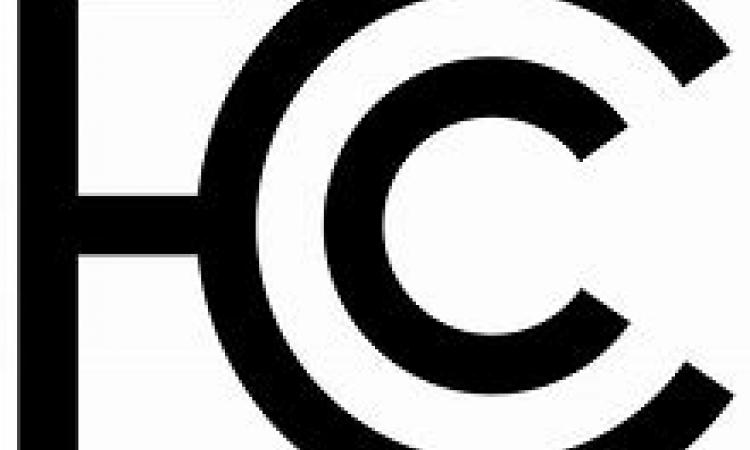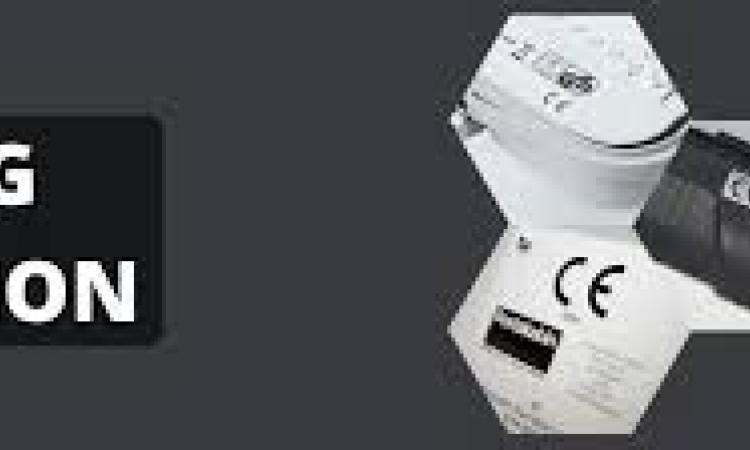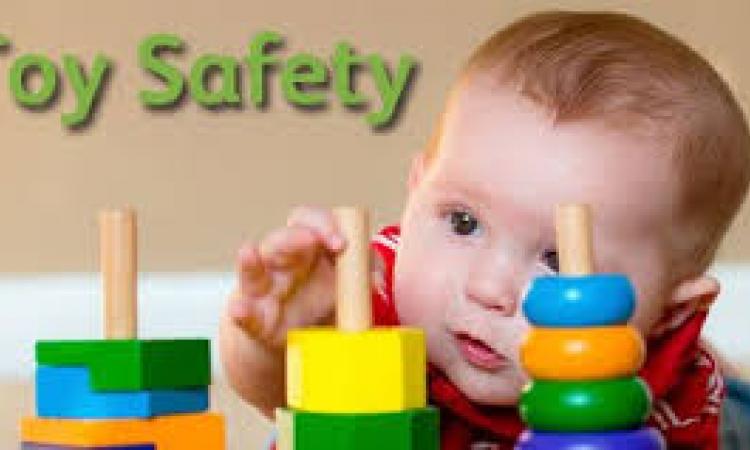
RoHS
RoHS (Restriction of Hazardous Substances)
RoHS Certification represents Restriction of Hazardous Substances. RoHS, otherwise called Directive 2002/95/EC, started in the European Union and limits the utilization of explicit unsafe materials found in electrical and electronic items.
RoHS has its underlying foundations in the European Union in 2003. The objective of RoHS (Reduction of Hazardous Substances) is to diminish the natural impact and well being effect of hardware. The enactment’s main role is to make gadgets producing more secure at each phase of an electronic gadget’s life cycle.
Benefits of RoHS :
With the consistent, fast development of innovation, numerous clients are discarding outdated gear in huge amounts. This is bringing about landfills being loaded up with risky materials. The abnormal amounts of electronic junk and e-squander are prompting mercury and lead harming. While reusing is being performed, numerous items are being transported with a portion of the risky materials still in them. The RoHS order was received to confine the measure of perilous materials in the assembling hardware. The expectation is to decrease the quantity of overwhelming metal harming occurrences, and perhaps e-squander.
RoHS restricts the use of the following materials :
Cadmium
Hexavalent chromium
Lead
Mercury
Polybrominated biphenyl
Reducing Instances of Heavy Metal Poisoning: Most e-squander is transported to processing plants in underdeveloped nations. The laborers in these industrial facilities endure the most with regards to lead and mercury harming. RoHS requires the utilization of sans lead binds and segments, in this manner lessening the quantity of overwhelming metal harming cases in these plants. Additionally, the condition of well being of the laborers and clients has improved immensely.
Product Reliability: Most of the notable gadgets makers have received RoHS. Clients are currently guaranteed of complete item well being. Thus, the dependability of these producers and their brands has improved drastically. The notoriety and offers of electronic segments has expanded.
Applicability :
With the quick spread of digitization, the world’s creation of electrical and electronic gadgets is detonating. Other than cell phones, consider the coming influx of IoT, shrewd home partners, robots, rambles, 3D printers, and home restorative gadgets to all edges of the planet. They are altogether controlled under RoHS.
Welcome to RoHS Guide

RoHS stands for Restriction of Hazardous Substances, and impacts the entire electronics industry and many electrical products as well. The original RoHS, also known as Directive 2002/95/EC, originated in the European Union in 2002 and restricts the use of six hazardous materials found in electrical and electronic products. All applicable products in the EU market since July 1, 2006 must pass RoHS compliance.
Directive 2011/65/EU was published in 2011 by the EU, which is known as RoHS-Recast or RoHS 2. RoHS 2 includes a CE-marking directive, with RoHS compliance now being required for CE marking of products. RoHS 2 also added Categories 8 and 9, and has additional compliance recordkeeping requirements.
Directive 2015/863 is known as RoHS 3. RoHS 3 adds four additional restricted substances (phthalates) to the list of six.
Is Your Organization RoHS Compliant for 2021?
Any business that sells applicable electrical or electronic products, equipment, sub-assemblies, cables, components, or spare parts directly to RoHS-directed countries, or sells to resellers, distributors or integrators that in turn sell products to these countries, is impacted if they utilize any of the restricted 10 substances.
With the rapid spread of digitization, the world's production of electrical and electronic devices is exploding. Besides mobile devices, think about the coming wave of IoT, smart home assistants, robots, drones, 3D printers, and home medical devices to all corners of the planet....they are all regulated under RoHS.
EU RoHS specifies maximum levels for the following 10 restricted substances. The first six applied to the original RoHS while the last four were added under RoHS 3, which took effect July 22, 2019.
- Cadmium (Cd): < 100 ppm
- Lead (Pb): < 1000 ppm
- Mercury (Hg): < 1000 ppm
- Hexavalent Chromium: (Cr VI) < 1000 ppm
- Polybrominated Biphenyls (PBB): < 1000 ppm
- Polybrominated Diphenyl Ethers (PBDE): < 1000 ppm
- Bis(2-Ethylhexyl) phthalate (DEHP): < 1000 ppm
- Benzyl butyl phthalate (BBP): < 1000 ppm
- Dibutyl phthalate (DBP): < 1000 ppm
- Diisobutyl phthalate (DIBP): < 1000 ppm
Related to RoHS is WEEE, which stands for Waste from Electrical and Electronic Equipment. WEEE Directive 2002/96/EC mandates the treatment, recovery and recycling of electric and electronic equipment (90% ends up in landfills). All applicable products in the EU market must pass WEEE compliance and carry the "Wheelie Bin" sticker.
Variuos services Dash provides are
Compliance with UAE Regulations on the Restriction of Hazardous Substances (RoHS): What You Need to Know
The first critical deadline for compliance with regulations governing restrictions on the use of hazardous substances in electrical and electronic equipment of 1 January 2018 has now passed. In this article, we examine the current regulatory environment and offer some helpful insights into issues that could be faced if starting the process after the prescribed deadline.
The Emirates Authority for Standardisation and Metrology (‘ESMA’) was established as the sole standardisation body in the UAE under the Law No. 28 of 2001. In line with its directives, ESMA issued UAE Cabinet Decision No. 10 of 2017, published in the Official Gazette on 27 April 2017, regulating the restriction of hazardous substances in electrical and electronic equipment (‘RoHS’). The RoHS regulation prescribes three significant deadlines for the application of the mandatory substance restrictions. The UAE ROHS is the same, in terms of requirements, as the European Union Directive 2011/65/EU on the restriction of the use of certain hazardous substances in EEE, which was published in the Official Journal of the European Union on July 1, 2011 and entered into force on July 21, 2011. The first deadline of January 1, 2018 required the registration of a certain group of electrical and electronic equipment (‘EEE’) with ESMA.
Scope of regulations
RoHS applies to companies importing EEE on the UAE market. EEE is defined as ‘equipment, which is dependent on electric currents or electromagnetic fields to work properly, and equipment for the generation, transfer and measurement of such currents and fields. In addition to equipment designed for use with a voltage rating not exceeding 1000 volts for alternating current and 1500 volts for direct current’.
The RoHS regulation covers the following products:
- Large household appliances;
- Small household appliances;
- IT and telecommunication equipment;
- Consumer equipment;
- Lighting equipment;
- Electrical and electronic tools (with the exception of large-scale stationary industrial tools);
- Toys leisure and sport equipment;
- Medical devices (with the exception of all implanted and infected products);
- Monitoring and control instruments including industrial monitoring and control instruments;
- Automatic dispensers; and
- Other EEE not covered by any of the categories above or, and falling within the definition of article one (products operated by electric power or electromagnetic field and designed to operate at a voltage of not more than 1000 volts for alternating current and 1500 volts for direct current).
The RoHS regulation aims to control or limit the presence of the following hazardous substances in EEEs:
| No. | Restricted Substance | Maximum Threshold Limit |
| 1 | Lead (Pb) | (0.1%) |
| 2 | Mercury (Hg) | (0.1%) |
| 3 | Cadmium (Cd) | (0.01%) |
| 4 | Hexavalent chromium (Vi) | (0.1%) |
| 5 | Polybrominated biphenyl (PBB) | (0.1%) |
| 6 | Polybrominated biphenyl ethers (PBDE) | (0.1%) |
| 7 | Bis (2-ethylhexyl) phthalate (DEHP) | (0.1%) |
| 8 | Butyl benzyl phthalate (BBP) | (0.1%) |
| 9 | Dibutyl phthalate (DBP) | (0.1%) |
| 10 | Diisobutyl phthalate (DIBP) | (0.1%) |
Certain products are exempt from the requirement to obtain registration. Such exempt products include EEEs used for the following: military/security; outer space; specially designed equipment; large-scale stationary industrial tools; large-scale fixed installations; non-type approved means of transportation; non-road mobile machinery made available exclusively for professional use; active implantable medical devices;professional photovoltaic panels; research and development equipment for business-to-business basis; and products for general lighting covered under UAE Cabinet Decision No. 24 of 2012.
Who should apply / Suppliers’ obligations
The authorised representative, or supplier, is responsible for the confirmation and acknowledgement that the EEE meets the requirements of the technical regulation. The term ‘supplier’ is defined as:
‘The factory, importer, agent or assembler of the product, or any main or secondary distributor whose activity affects the product properties or any commercial or legal representative responsible for the import, installation and operation of the product subject to the provisions hereof who practices his business through a company or individual establishment licensed in the State.’
Conformity Assessment Options
There are two options to comply with RoHS requirements:
Option 1: Mandatory under the Emirates Conformity Assessment Scheme (‘ECAS’)
- A risk assessment is to be submitted in case the full product assessment for RoHS is not completed;
- Applicant executes a Declaration of Conformity (‘DoC’), on ESMA’s template, including only the critical components;
- Applicant submits a full RoHS test report of the complete product (if available). Otherwise, test reports of at least three critical component need to be submitted; and
- ESMA verifies compliance and issues a Certificate of Conformity (‘CoC’).
Under this option, critical components are those where their failure could lead to a breach of electrical safety. (i.e. electrical plug, motor, insulation/body, etc.). They may also be identified by the manufacturer based on their own risk assessment procedure. The justification used to identify the critical components is to be indicated in the DOC form. It is worth noting that ESMA accepted internal test reports for applications made only up to December 31, 2018.
A CoC is valid for one year only. In the event that a change in component (i.e. a new component was utilised for the manufacture of the already certified product) occur during the validity of the certificate, the certificate holder shall ensure continued compliance of the certified product and that changes has to be updated in the technical file during certificate renewal.
Option 2: Module H under the Emirates Quality Mark (‘EQM’) scheme
- Applicant will execute a DoC;
- Applicant will submit risk assessment documents based on IEC 63000, IEC 62476 and IEC 62474;
- A technical audit and verification is conducted through ESMA undertaking a site visit at the manufacturing facility; and
- ESMA verifies compliance then issues approval for the use of the EQM on the products manufactured by the facility.
Under this option, the manufacturing facility itself is evaluated for compliance. EQM approvals are valid for three years.
Costs / Timelines
The fees for registration under Option 1 are AED 4,300 per application. One application can include up to 45 products within the same application. The average timeframe for service completion is four working days, assuming all the documentations are complete.
The fees for Option 2 can exceed AED 40,000, which includes the application fee and the costs of two auditors visiting the factory where the products are manufactured (not including travel and accommodation fees). There is no specific timeframe for service completion, as it would depend on the auditors’ availability, number of factories and length of visit.
The next critical deadlines is set for 1 January 2020 and applies to the use of hazardous substances in the following categories, amongst others:
- Medical devices;
- In vitro diagnostic medical devices;
- Monitoring and control instruments;
- Industrial monitoring and control instruments; and
- EEE other than in group A, along with cables and spare parts for the repair, reuse, updating or functionalities or upgrading of capacity of EEE placed on the market, with some exceptions.
Applications should be submitted six months before the deadline, ESMA advises, to prevent last minute applications being subject to delays in processing.
Penalties for non-compliance
Failure to register products falling within the scope of RoHS is an offence with the additional knock-on effect that products entering the country will not be cleared through customs. A supplier may be obliged to withdraw non-compliant products from the market and incur all resultant costs. Penalties include imprisonment and fines of up to AED 30,000 according to the Federal Law No. 28 of 2001 on the establishment of ESMA.
Next steps
For those companies currently navigating the registration process, that are already working with one of ESMA’s notified bodies, who are in the process of, or have completed, reviewing the documents, once the document reviews are complete, i.e. the DoCs on ESMA’s template are signed and stamped by the applicant, and the risk assessment / technical reports are all in compliance with ESMA’s requirements, the same will be uploaded onto ESMA’s online portal. Companies are then required to pay the fees online, which include the cost for the document review by the notified bodies. ESMA will issue an electronic certificate of conformity to be presented by the supplier to the customs authority when clearing goods through customs.
For those companies that have not yet started the process, these companies would be considered in breach of the RoHS regulation if they have products already in the UAE market that require registration, and could face the penalties outlined above. We would advise these companies to start the process immediately and to seek advice on the best route to engaging in a dialogue with ESMA to allow late applications whilst reducing the risk of regulatory sanctions being applied.
Contact dash@dashinspectorate.com or call whats app 00971508692438


